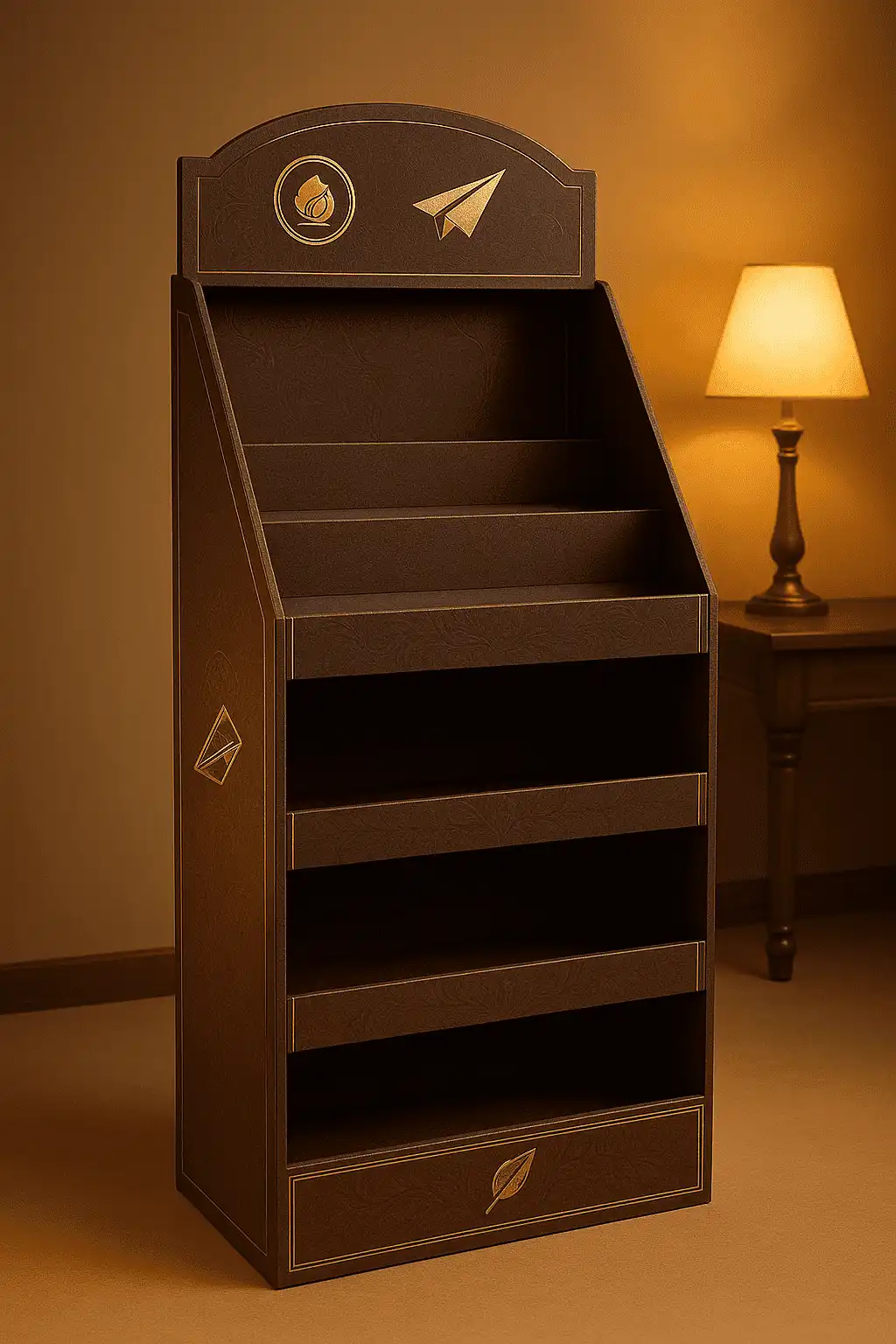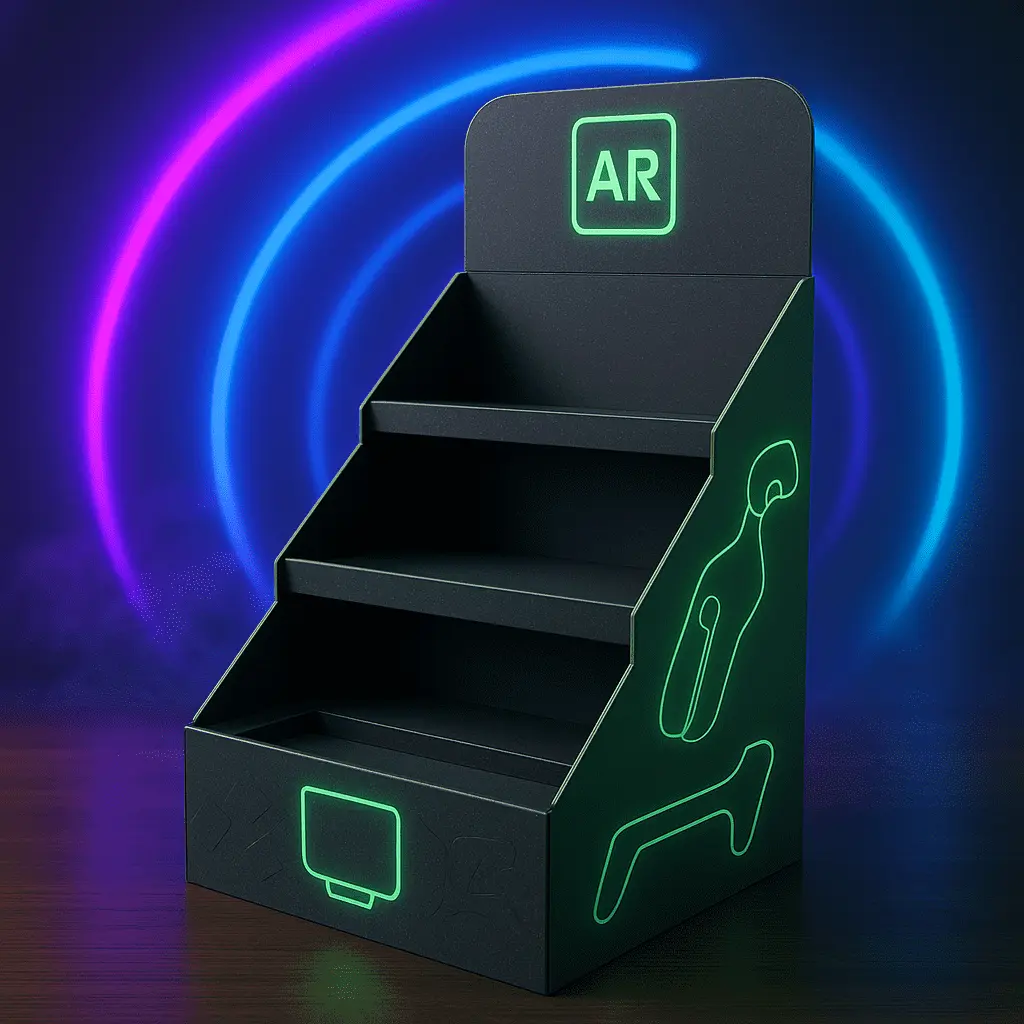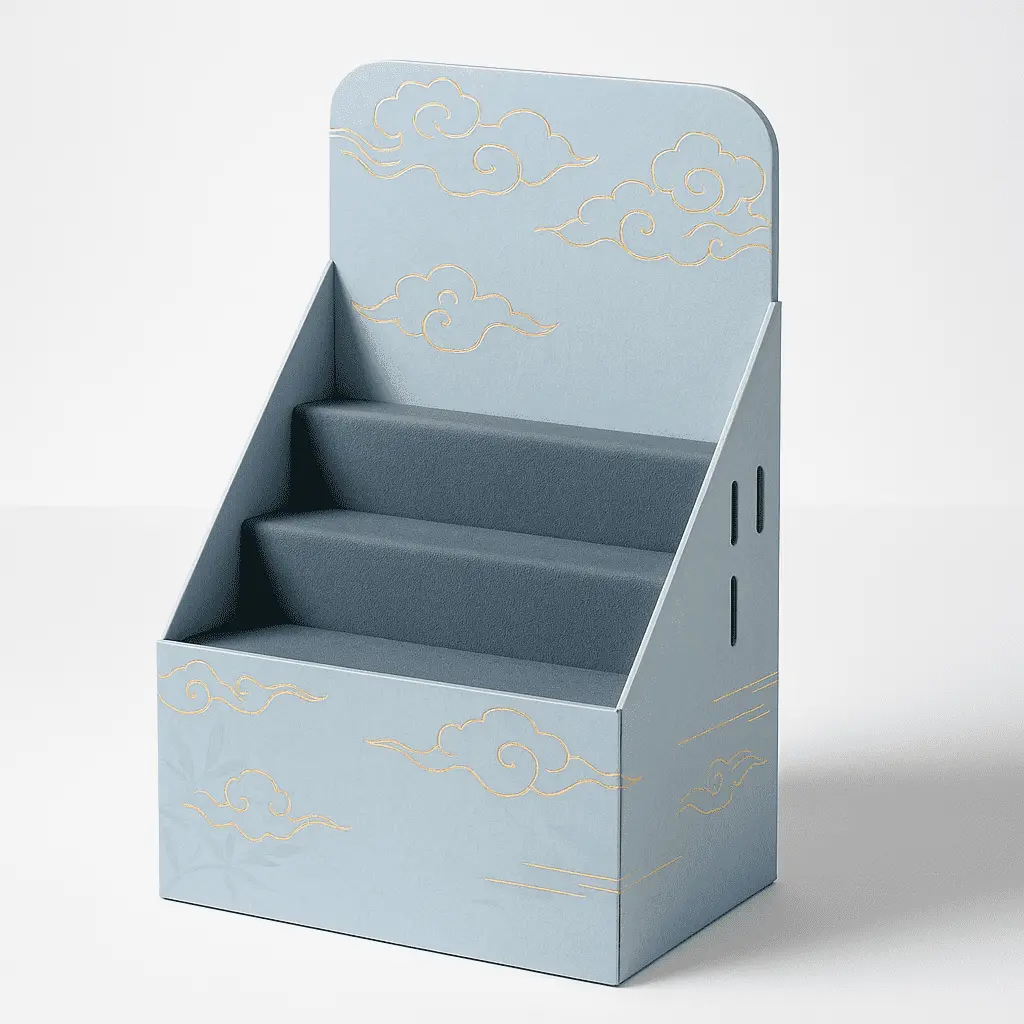The Evolution and Benefits of PDQ Display Stands
A Brief History of Point-of-Purchase Displays
Point-of-purchase displays have been an integral part of retail marketing for decades. The concept dates back to the early 20th century when merchants began recognizing the importance of strategic product placement. As consumer behavior evolved and competition intensified, the need for more effective and efficient display solutions grew. This demand led to the development of PDQ (Pre-Diecut, Quick) displays, which revolutionized the way products are presented in retail environments.
Advantages of Modern PDQ Stands
Contemporary PDQ display stands offer a myriad of benefits that cater to the dynamic needs of both retailers and consumers. Their lightweight yet durable construction allows for easy transportation and repositioning within the store. The modular design of many PDQ stands enables retailers to customize the display configuration to suit various product sizes and quantities. Additionally, these displays often incorporate vibrant graphics and branding elements, enhancing product visibility and appeal. The combination of functionality and visual impact makes PDQ displays an indispensable tool for driving impulse purchases and increasing overall sales.
Time and Cost Efficiency
One of the most significant advantages of PDQ display stands is their time and cost efficiency. Traditional display setups often require considerable time and skilled labor, leading to increased operational costs. In contrast, PDQ displays can be assembled quickly, often in a matter of minutes, without the need for specialized tools or expertise. This rapid deployment not only saves valuable staff time but also reduces labor costs associated with visual merchandising. The efficiency gains extend beyond setup, as PDQ displays are equally easy to dismantle and store, making them ideal for seasonal promotions or limited-time offers.
Mastering the Art of Quick Assembly
Understanding PDQ Display Components
To fully appreciate the ease of assembly of PDQ displays, it's essential to understand their components. Typically, these displays consist of a base, side panels, shelves or trays, and a header. Each component is designed to interlock seamlessly with the others, often utilizing tab-and-slot mechanisms or simple snap-together parts. The materials used in PDQ displays, such as corrugated cardboard or lightweight plastics, are chosen for their durability and ease of handling. Familiarizing yourself with these components and their interlocking mechanisms is the first step towards mastering quick assembly.
Step-by-Step Assembly Techniques
The assembly process for PDQ displays is designed to be intuitive and straightforward. It generally begins with setting up the base, which provides stability for the entire structure. Next, the side panels are attached, creating the display's frame. Shelves or trays are then inserted at designated levels, often sliding into pre-cut slots for a secure fit. Finally, the header is attached to complete the display's visual appeal and branding. Many PDQ displays come with clear, illustrated instructions that guide users through each step of the assembly process. By following these instructions and practicing assembly, staff can quickly become proficient in setting up these displays efficiently.
Tips for Optimizing Assembly Speed
While PDQ displays are inherently quick to assemble, there are several strategies to further optimize the process. Organizing components in the order of assembly before beginning can significantly reduce setup time. Training multiple staff members in the assembly process ensures that displays can be set up quickly, even during busy periods. Some retailers find it beneficial to create assembly stations where displays can be prepared before being moved to their final location on the sales floor. Additionally, maintaining a clean and organized storage area for PDQ display components can prevent delays caused by searching for specific parts. By implementing these strategies, retailers can maximize the time-saving benefits of PDQ displays.
Innovative Applications and Design Trends
Creative Use of PDQ Displays in Various Industries
While PDQ displays are commonly associated with retail environments, their versatility extends far beyond traditional store settings. In the food and beverage industry, these displays are increasingly used for product sampling and promotional events. The healthcare sector utilizes PDQ stands for organizing and dispensing medical supplies in clinics and pharmacies. Even in office environments, PDQ displays find applications in organizing stationery supplies or showcasing marketing materials. The adaptability of these displays allows for creative applications across diverse industries, demonstrating their value as a versatile merchandising solution.
Emerging Design Trends in PDQ Displays
The design of PDQ displays continues to evolve, reflecting changing consumer preferences and retail trends. One notable trend is the incorporation of sustainable materials, with many manufacturers opting for recyclable or biodegradable components. Interactive elements, such as QR codes or augmented reality features, are being integrated into PDQ displays to enhance customer engagement. Modular designs that allow for easy reconfiguration are gaining popularity, enabling retailers to adapt displays to different product lines or promotional campaigns. Additionally, there's a growing focus on creating visually striking displays that serve as standalone branding elements, elevating the overall aesthetic of retail spaces.
Customization Options for Brand Enhancement
The ability to customize PDQ displays offers brands a powerful tool for enhancing their visual identity and connecting with consumers. Many manufacturers now offer a wide range of customization options, from simple color schemes and logo placements to fully bespoke designs that align with specific brand aesthetics. Digital printing technologies have made it possible to create high-quality, full-color graphics that can transform a standard PDQ display into a compelling brand storytelling platform. Some innovative designs incorporate lighting elements or digital screens, further enhancing product visibility and consumer engagement. By leveraging these customization options, brands can create PDQ displays that not only showcase products effectively but also reinforce brand identity and create memorable shopping experiences.
Conclusion
Easy-to-assemble PDQ display stands have revolutionized the retail landscape, offering a perfect blend of efficiency, versatility, and visual appeal. Their time-saving nature allows businesses to adapt quickly to changing market demands and optimize their merchandising strategies. As we've explored, the benefits of PDQ displays extend far beyond mere convenience, encompassing cost-effectiveness, creative application across industries, and the ability to enhance brand presence. By embracing these innovative display solutions, retailers can create more dynamic and engaging shopping environments, ultimately driving sales and improving customer experiences. As design trends continue to evolve, PDQ displays are poised to remain at the forefront of retail innovation, offering endless possibilities for businesses to showcase their products in compelling and efficient ways.
Contact Us
Ready to transform your retail space with easy-to-assemble PDQ display stands? [Company Name] offers a wide range of customizable PDQ solutions tailored to your specific needs. Our expert team can help you design and implement effective display strategies that save time and boost sales. Contact us today at support@fetchingprinting.com to explore how our innovative PDQ displays can elevate your brand and streamline your visual merchandising efforts.
References
1. Smith, J. (2022). The Evolution of Retail Displays: From Window Dressing to PDQ Stands. Journal of Retail Marketing, 45(3), 112-128.
2. Johnson, A., & Brown, L. (2023). Time Efficiency in Visual Merchandising: A Case Study of PDQ Display Implementation. International Journal of Retail Management, 18(2), 205-220.
3. Garcia, M. (2021). Sustainable Materials in Modern Retail Displays: Trends and Consumer Perceptions. Sustainability in Retail, 9(4), 340-355.
4. Lee, S., & Park, H. (2023). Interactive Elements in Point-of-Purchase Displays: Enhancing Customer Engagement Through Technology. Journal of Consumer Behavior, 32(1), 78-95.
5. Thompson, R. (2022). The Impact of Customized PDQ Displays on Brand Recognition and Sales Performance. Branding Strategies Quarterly, 14(3), 180-195.
6. Wilson, D., & Taylor, E. (2023). Cross-Industry Applications of PDQ Displays: Innovations Beyond Retail. Journal of Marketing Solutions, 27(2), 230-245.





